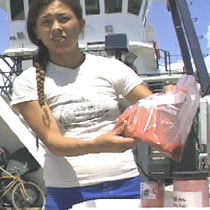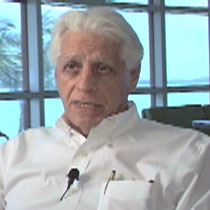2007年VOA标准英语-US Firm to Use Plankton to Combat Greenhouse Ga(在线收听)
Miami
21 June 2007
Scientists are seeking new ways to reverse the buildup of carbon dioxide in the atmosphere that many believe is the cause of global warming. Today on Searching for Solutions, VOA's Brian Wagner reports that one project in the United States aimed at stimulating plankton growth in the oceans is raising some debate about its possible effectiveness.
Dumping tons of iron dust into the ocean may not appear to benefit the environment. But researchers with the U.S. firm Planktos say it is crucial to their efforts to stimulate plankton growth and remove carbon dioxide from the atmosphere.
 |
| Melodie Grubbs |
Researchers say plankton organisms are struggling because less iron dust is being blown onto the ocean's surface by nutrient-rich winds. The Planktos team hopes to reverse the trend by seeding the waters off the Galapagos Islands and several other spots in the Pacific Ocean with a special form of iron dust.
"So we'll combine this with sea water first, concentrate it, then put it back in the ocean, and then do a zig-zag pattern to get the best coverage we can" says Grubbs describing the technique.
Like trees, plankton absorbs carbon dioxide and converts it into biomass, which can remain under water for centuries. Critics of the Planktos model, however, say it is nearly impossible to prove how much carbon dioxide is pulled from the atmosphere.
 |
| Frank Millero |
Millero says the team will have to continue dumping iron to trigger new plankton blooms, and he says that will be very costly.
To support its efforts, Planktos hopes to get financing from major companies as a way to offset the greenhouse gases released through manufacturing or other activities.
The firm's Pacific project manager Michael Bailey says these carbon credits are generating new opportunities in environmental restoration. "We are part of the international carbon credit community, part of that marketing plan, basically trying to find a way to make money by restoring the ocean's and the earth's atmosphere. So this is a beautiful business model."
Environmental experts may not agree on the best way to reverse decades of carbon dioxide emissions, but they do agree that more efforts are needed to remove the gas from the atmosphere.